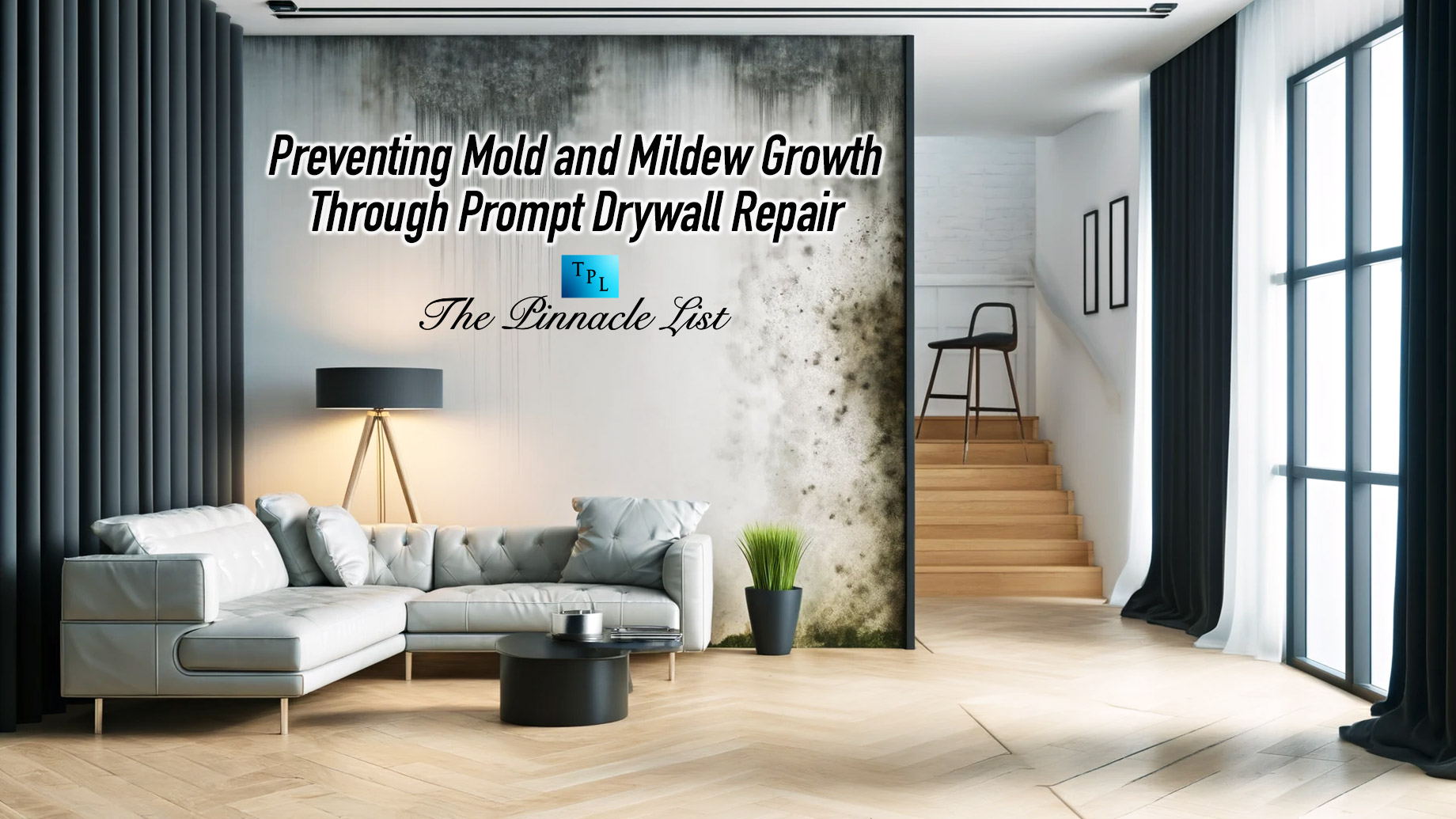
Imagine arriving home after a restful vacation to find a disagreeable musty smell permeating the space. Further investigation reveals unsightly patches of mildew and mold growing along your walls, silently destroying your house and health. Although it’s a situation that no homeowner wants to deal with, it happens far too frequently, particularly in areas where drywall damage has gone untreated.
Even though drywall is a mainstay of contemporary construction, it is not immune to deterioration. Its integrity may be compromised over time by holes, cracks, and water damage, which will create the ideal environment for mold and mildew to grow. If left unchecked, these fungal invaders can seriously harm your family’s health in addition to causing unsightly discolorations and odors.
We’ll go over the vital significance of timely drywall repair in stopping the growth of mold and mildew in this in-depth guide. From identifying the underlying causes of moisture intrusion to putting proactive repair plans into place, we’ll provide you with the information and resources you need to defend your house from these persistent intruders and take pleasure in a healthier, mold-free living space.
1. The Connection Between Mold Growth and Drywall Damage
Understanding the relationship between moisture and fungal colonization is crucial to comprehending how drywall damage promotes the growth of mold and mildew. Because it is composed of porous gypsum board, drywall easily absorbs moisture from its surroundings. Holes or cracks in the drywall allow water to seep in and provide the perfect environment for mold spores to proliferate. Furthermore, water damage from floods or leaks can soak into the drywall, aggravating the issue and hastening the growth of mold.
2. Recognizing Typical Drywall Damage Symptoms
Preventing the growth of mold and mildew begins with identifying the warning indicators of drywall damage. These symptoms could be paint peeling or discoloration, as well as obvious drywall bulges, cracks, or sagging. Wetness, musty smells, or the existence of water stains on walls or ceilings are additional warning signs that need to be addressed right away. You can prevent future damage to your home and stop possible mold problems in their tracks by taking quick action on these concerns.
3. The Perils of Exposure to Mold and Mildew
In addition to being unsightly annoyances, mold, and mildew can seriously endanger the health of anyone who lives in the impacted area. Mold spores and mycotoxins can cause respiratory problems, allergic reactions, and worsen pre-existing conditions like allergies or asthma. Extended exposure may potentially result in more serious health issues, such as neurological disorders and fungal infections. You can protect your family’s health and the structural integrity of your house by preventing the growth of mold and mildew through timely drywall repair.
4. Proactive Drywall Repair Techniques
Treating current damage and averting future problems are the first steps in preventing the growth of mold and mildew in drywall. Patching holes, cracks, and water-damaged areas in the drywall as soon as possible stops moisture from seeping in and gets rid of places where mold spores could grow. Mold development is further decreased by caulking gaps around windows, doors, and plumbing fixtures, which also helps to keep a watertight barrier and stop water leaks.
5. The Importance of Appropriate Ventilation and Humidity Control
Mold prevention in any home requires proper ventilation and humidity control. Making sure there is enough airflow throughout the living area contributes to the removal of extra moisture from the air, lowering the humidity levels that encourage the growth of mold and mildew. Dehumidifiers should be used in damp areas, and exhaust fans should be installed in laundry rooms, bathrooms, and kitchens to help maintain ideal indoor air quality and avoid moisture-related issues.
6. Speaking with Professionals in Drywall Repair
Although some small drywall repairs can be completed on your own, larger damage or water intrusion may call for the knowledge of qualified contractors. Experts in drywall repair, like https://taylorlockleardrywall.com/, possess the abilities, resources, and know-how required to evaluate the damage, pinpoint underlying problems, and carry out efficient restoration procedures. You can reduce the likelihood of mold and mildew growth in the future by hiring reputable professionals to help with your drywall repairs and ensure that they are done correctly the first time.
In Summary
Timely drywall repair is essential to stopping the growth of mold and mildew and preserving a healthy interior atmosphere. You can safeguard your home against the damaging effects of mold and mildew while maintaining its structural integrity and value by quickly repairing drywall damage, locating and minimizing sources of moisture intrusion, and putting proactive repair strategies into place. Act now to guarantee that you and your family can live in a mold-free environment before it’s too late. View the Taylor Locklear Drywall’s website today for expert drywall repair services tailored to your specific needs and ensure that your home remains a safe and healthy haven for years to come.